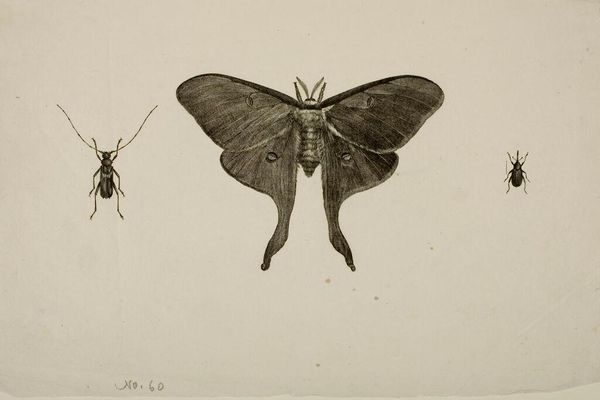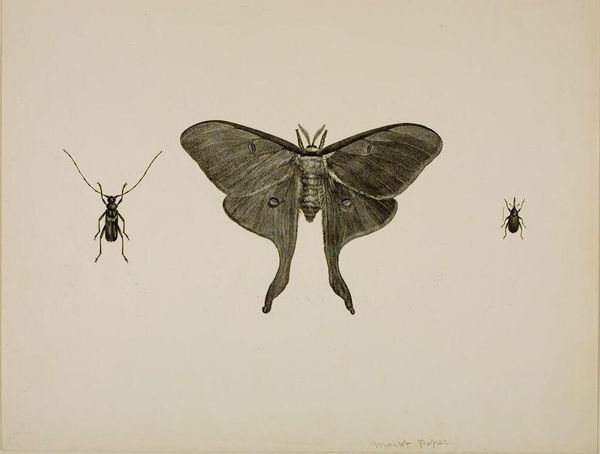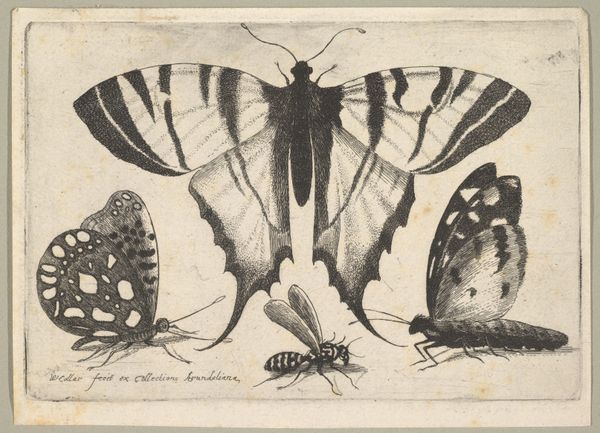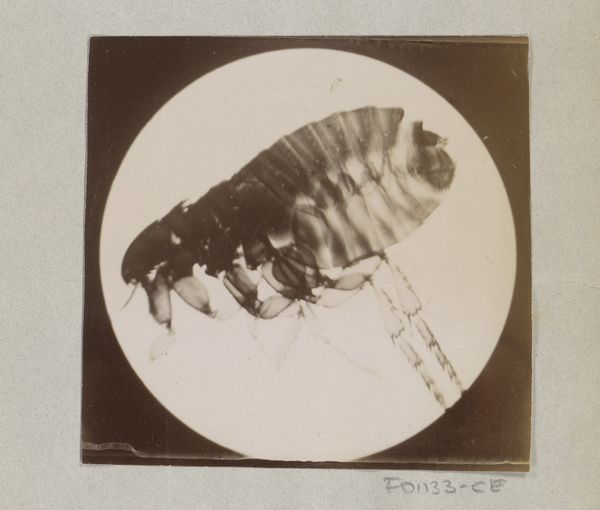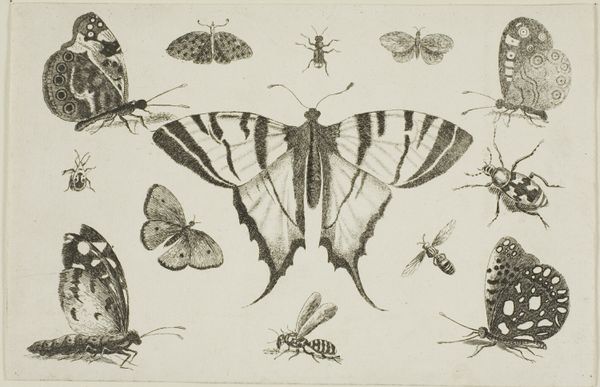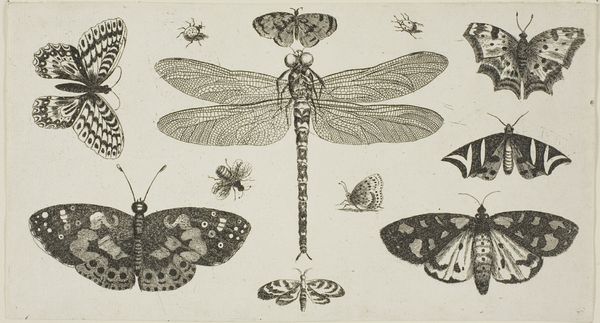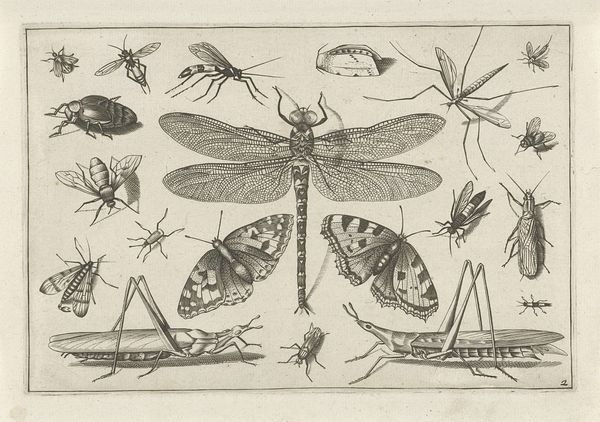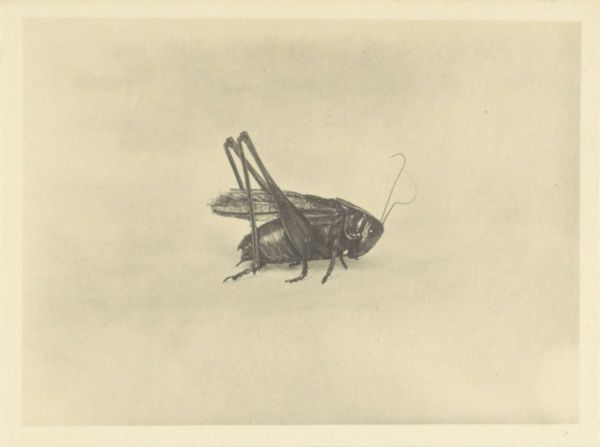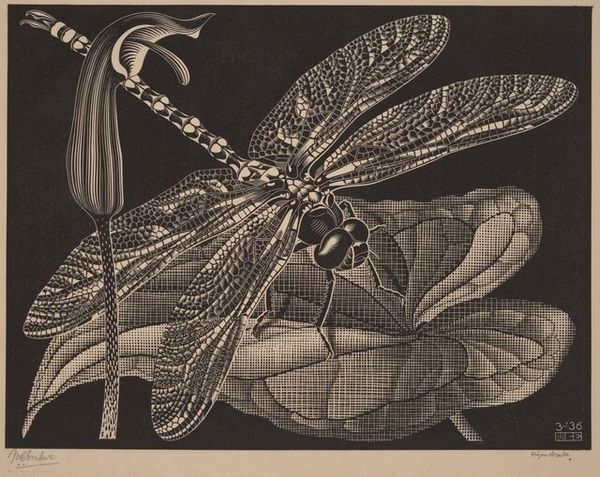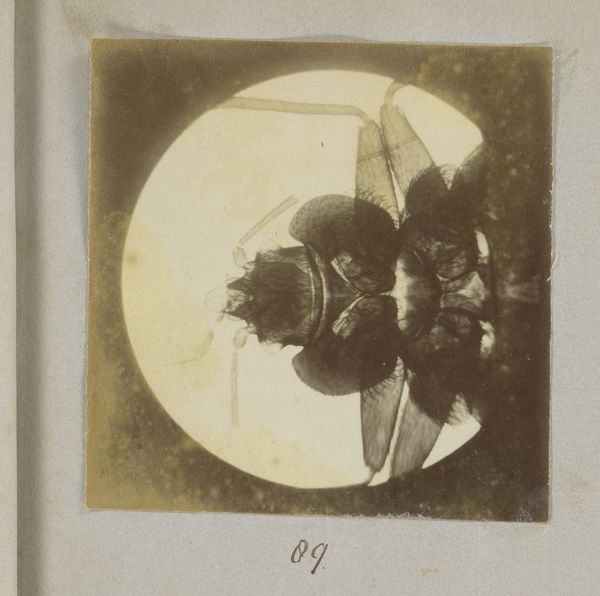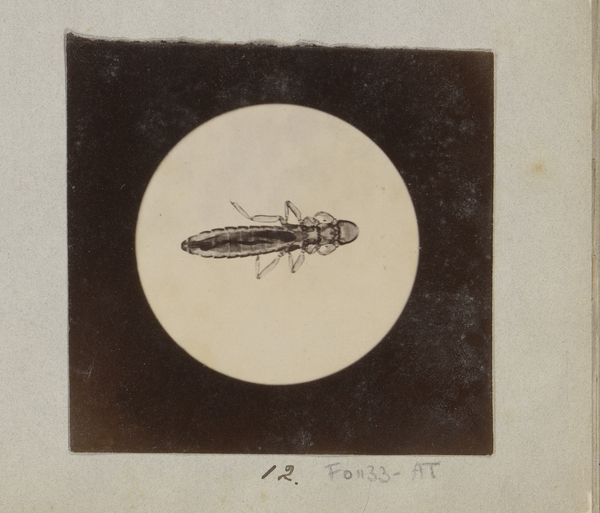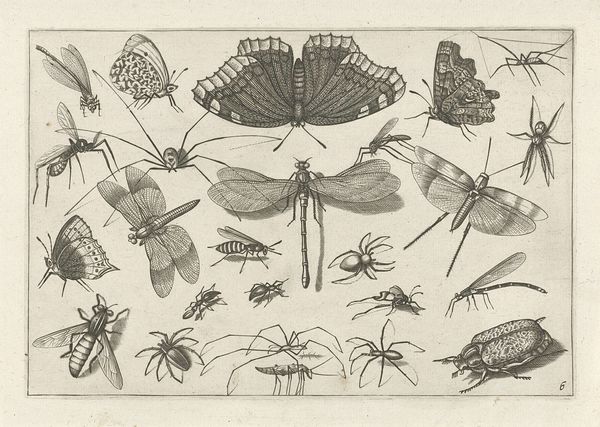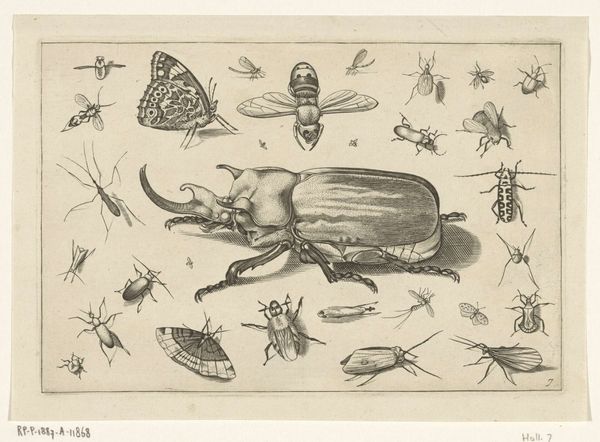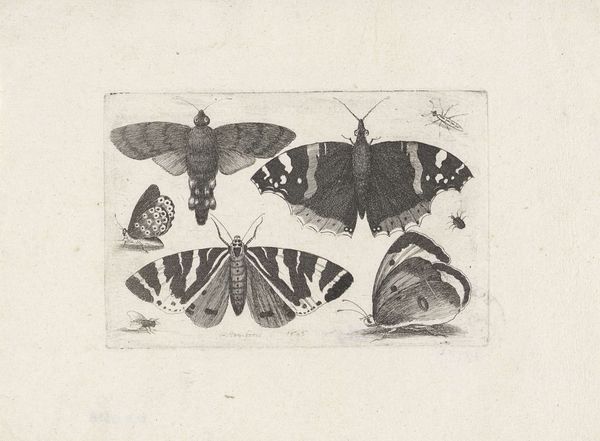
print, intaglio
# print
#
intaglio
#
figuration
#
line
Copyright: National Gallery of Art: CC0 1.0
Curator: This intaglio print, titled "L'Abeille," was created by Mario Avati in 1958. At first glance, it feels rather stark, doesn't it? The high contrast, the dark background… Editor: Yes, and that starkness lends it a surreal, almost nightmarish quality. The insect seems enormous, monumental, especially with the moon-like orb behind it. The piece evokes both scientific illustration and science fiction horror. There is a gendered trope about menacing female insects as dangerous femme fatales...is this operating here? Curator: That is insightful. Considering Avati's mastery of the mezzotint technique, a process known for its rich tonal range, it is interesting that he chooses such a sharply contrasting composition here. Think about bees themselves. Throughout history, they have been a powerful symbol. For some ancient cultures, they represented diligence, community, even the soul. I see in Avati’s composition an insect suspended within negative space... the work reminds us how a solitary entity impacts the world around itself, as individuals relate to societies and systems. Editor: Absolutely. It challenges our conventional views of the insect world. What does it mean that such an ordinary creature, associated with industry and nature's rhythms, can feel so monumental, ominous even, on this scale and with these values? The composition places a focus on class struggle—the hive is a symbol of cooperative organization, but who enjoys its benefits? The image can also trigger conversations around our environment as bees are vulnerable due to changes in climate. The work, more subtly than overtly, makes a political statement. Curator: True. And considering this print emerged in the late 1950s, it mirrors mid-century anxieties about the dominance of the natural world and a turn towards a science and technological solution. This one print contains dual messages. One the one hand, human reliance upon insect and plant life, on the other human’s attempts to harness and control those organic elements through mechanical advancements. I note this image presents the natural image almost as mechanical rather than relying on fluid or natural renderings. Editor: I like that! By zooming in so much on an individual bee in sharp, artificial focus and texture, and putting it in stark opposition with the organic nectar and stamen, and even against the 'moon' (another symbol for earth's organic counterpart), we're confronting our own complex and sometimes destructive relationship with the ecosystem around us. Curator: It serves as a potent reminder of how symbols in visual language persist and reconfigure across time, inviting us to reassess not only art history, but our place within culture as well. Editor: Yes, a beautifully disquieting piece that transcends the aesthetic into realms of societal reflection.
Comments
No comments
Be the first to comment and join the conversation on the ultimate creative platform.
